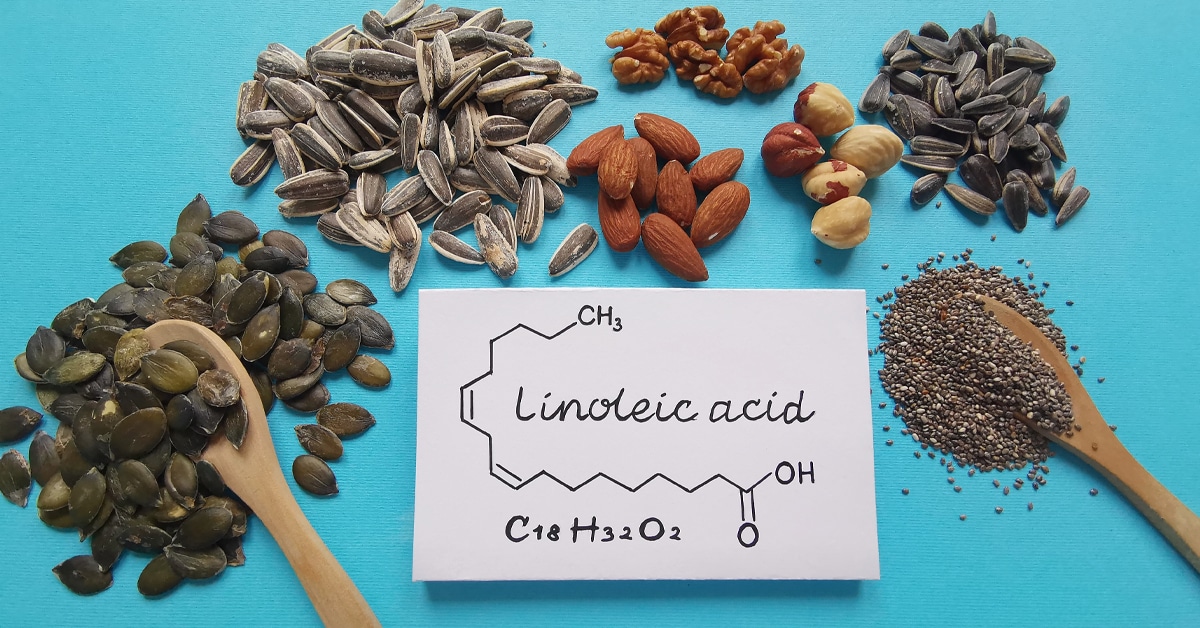- Polyunsaturated fatty acids (PUFAs), such as omega-6 and omega-3 fatty acids, have anti-inflammatory properties and may reduce the risk of MS onset or slow MS progression.
- MS Australia-supported researchers analysed the fatty acids in the blood of people with MS/clinically isolated syndrome and people without MS.
- Higher levels of omega-6 PUFAs were linked with a lower risk of MS, but more study is needed to determine if higher omega-3 PUFA levels offer benefits.
Polyunsaturated fatty acids: what is their link to MS?
A fatty acid is a building block of fats. It’s a type of molecule that combines with others to form the fats found in our food and bodies. Think of it like a small piece of a puzzle that, when put together with other pieces, makes up the whole picture of a fat molecule.
Fats made up of polyunsaturated fatty acids (PUFAs) are found in many plant-based oils (such as seed and nut oils) and in fish oils.
PUFAs include omega-6 fatty acids and omega-3 fatty acids. Both types of PUFAs have anti-inflammatory properties. As MS is an inflammatory disease, both omega-3 and omega-6 PUFAs may be able to reduce the risk of MS onset or slow its progression.
Examples of foods high in omega-6 fatty acids include safflower, sunflower and canola oils, tofu, walnuts and almonds.
Examples of foods high in omega-3 fatty acids include flaxseeds, chia seeds, walnuts, soybeans and oily fish.
What did the researchers do?
MS Australia-supported researchers, including Dr Eleanor Dunlop and Associate Professor Lucinda Black, analysed the fatty acid profiles of blood samples taken from 589 people diagnosed with MS or clinically isolated syndrome (CIS), and 630 people without MS.
Using gas-liquid chromatography, a technique that separates and analyses substances in a mixture by turning them into gas and passing them through a tube with a special liquid, the researchers measured the amounts of different types of omega-6 and omega-3 PUFAs and examined their association with the risk of MS.
They also considered individuals’ gender, age, ethnicity, history of mononucleosis infection (caused by Epstein-Barr virus), smoking history, family history of MS, education level, body mass index, vitamin D levels and use of fish oil supplements.
What did the researchers find?
Published in Multiple Sclerosis and Related Disorders, the researchers found that having a higher blood level of omega-6 PUFAs was associated with a lower risk of MS or CIS. For every unit increase in omega-6 PUFAs, the chance of having MS or CIS was reduced by 6%.
There was no association between blood levels of omega-3 PUFAs and the risk of having MS or CIS.
What does this mean for the risk of developing MS?
Having a higher total level of omega-6 PUFAs may be helpful in reducing the risk of developing MS. This suggests that including foods rich in omega-6 PUFAs in a diet is beneficial.
However, more study is needed to determine whether higher levels of omega-3 PUFAs would lower the risk of developing MS.
MS Australia recommends that people with and without MS follow the Australian Guide to Healthy Eating, which is also detailed in the Adapting Your Lifestyle Guide.
This guide, developed by MS Australia in collaboration with national experts and people affected by MS, provides practical recommendations for evidence-based lifestyle changes that may benefit aspects of MS, including relapses, disability, and other symptoms, and improve overall quality of life.





